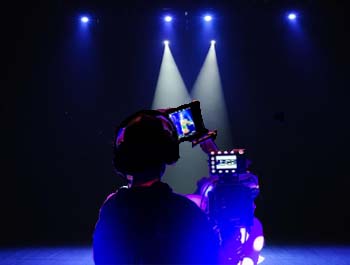
Planning a live stage show can be incredibly exciting! Whether it’s theater, music, dance, or any other form of performing arts, there are several key elements to consider:

Concept and Theme: Define the overarching theme or concept of your show. What story or message do you want to convey? What emotions do you want to evoke in your audience?
Script or Program: If your show involves dialogue or narration, develop a script or program outline. This will serve as a roadmap for rehearsals and performances.
Venue Selection: Choose a venue that suits the needs of your production in terms of size, acoustics, technical capabilities, and accessibility. Consider factors like audience capacity and seating arrangements.
Production Team: Assemble a skilled production team including directors, producers, stage managers, choreographers, lighting designers, sound engineers, set designers, costume designers, and more, depending on the scale and complexity of your show.
Casting: Hold auditions to select talented performers who fit the roles in your production. Consider factors like acting ability, vocal range, dance skills, and stage presence.
Rehearsals: Schedule regular rehearsals to fine-tune performances, work on blocking and choreography, and ensure that all technical elements are integrated seamlessly.
Set Design and Construction: Create or commission sets and props that bring your vision to life on stage. Coordinate with set designers and construction teams to build and install the necessary elements.
Costume Design and Wardrobe: Design or select costumes that enhance characters and contribute to the overall aesthetic of the production. Ensure that costumes are practical for performers to move and dance in.
Lighting and Sound Design: Work with lighting and sound designers to create atmospheric effects, cue transitions, and enhance the mood and impact of performances.
Promotion and Marketing: Develop a marketing strategy to generate buzz and attract audiences to your show. Utilize social media, traditional advertising channels, press releases, and promotional events.
Ticket Sales and Box Office: Set up systems for selling tickets and managing box office operations efficiently. Consider online ticketing platforms for convenience and accessibility.
Safety and Logistics: Prioritize the safety of performers, crew, and audience members by implementing appropriate health and safety protocols. Consider logistical factors such as transportation, accommodations, and backstage facilities.
Tech Rehearsals: Conduct comprehensive technical rehearsals to ensure that all elements of the production, including lighting, sound, set changes, and special effects, run smoothly.
Dress Rehearsals: Run full dress rehearsals with costumes, makeup, and all technical elements in place to simulate the live performance experience as closely as possible.
Opening Night and Run: Finally, open your show to the public and enjoy the thrill of live performance! Be prepared to manage any last-minute challenges that may arise during the run of the show, and celebrate the hard work and talent of everyone involved in bringing your vision to life on stage.






